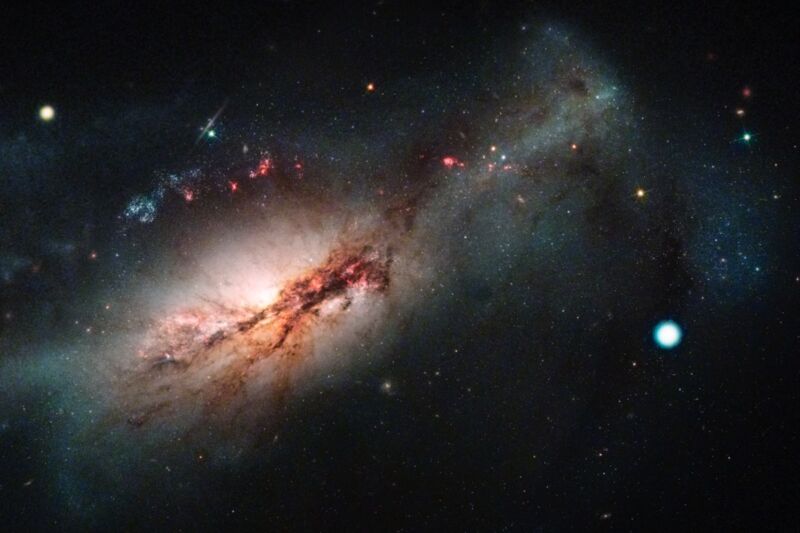Newly discovered supernova may be same type as the one observed in 1054

Enlarge / Las Cumbres Observatory and Hubble Space Telescope color composite of the electron-capture supernova 2018zd (the large white dot on the right) and the host starburst galaxy NGC 2146 (toward the left). (credit: NASA/STSCI/J. Depasquale; Las Cumbres Observatory)
Around July 4, 1054, Chinese astronomers recorded a "guest star" that shone so brightly, it was visible in broad daylight for 23 days. The remnants of that long-ago supernova now form the Crab Nebula, which has long been of great interest to astronomers. Some have hypothesized that SN 1054 (as it is now known) was a new, rare type of supernova first described by a physicist some 40 years ago. A team of astronomers has now identified a second recent supernova-dubbed SN 2018zd-that meets all the criteria for this new type, according to a new paper published in the journal Nature Astronomy, thereby providing a vital missing link in our knowledge of stellar evolution.
"The term 'Rosetta Stone' is used too often as an analogy when we find a new astrophysical object, but in this case I think it is fitting," said co-author Andrew Howell of Las Cumbres Observatory (LCO). "This supernova is literally helping us decode thousand-year-old records from cultures all over the world. And it is helping us associate one thing we don't fully understand, the Crab Nebula, with another thing we have incredible modern records of, this supernova. In the process it is teaching us about fundamental physics: how some neutron stars get made, how extreme stars live and die, and about how the elements we're made of get created and scattered around the universe."
There are two types of known supernova, depending on the mass of the original star. An iron-core collapse supernova occurs with massive stars (greater than ten solar masses), which collapse so violently that it causes a huge, catastrophic explosion. The temperatures and pressures become so high that the carbon in the star's core begins to fuse. This halts the core's collapse, at least temporarily, and this process continues, over and over, with progressively heavier atomic nuclei. (Most of the heavy elements in the periodic table were born in the intense furnaces of exploding supernovae that were once massive stars.) When the fuel finally runs out entirely, the (by then) iron core collapses into a black hole or a neutron star.
Read 8 remaining paragraphs | Comments